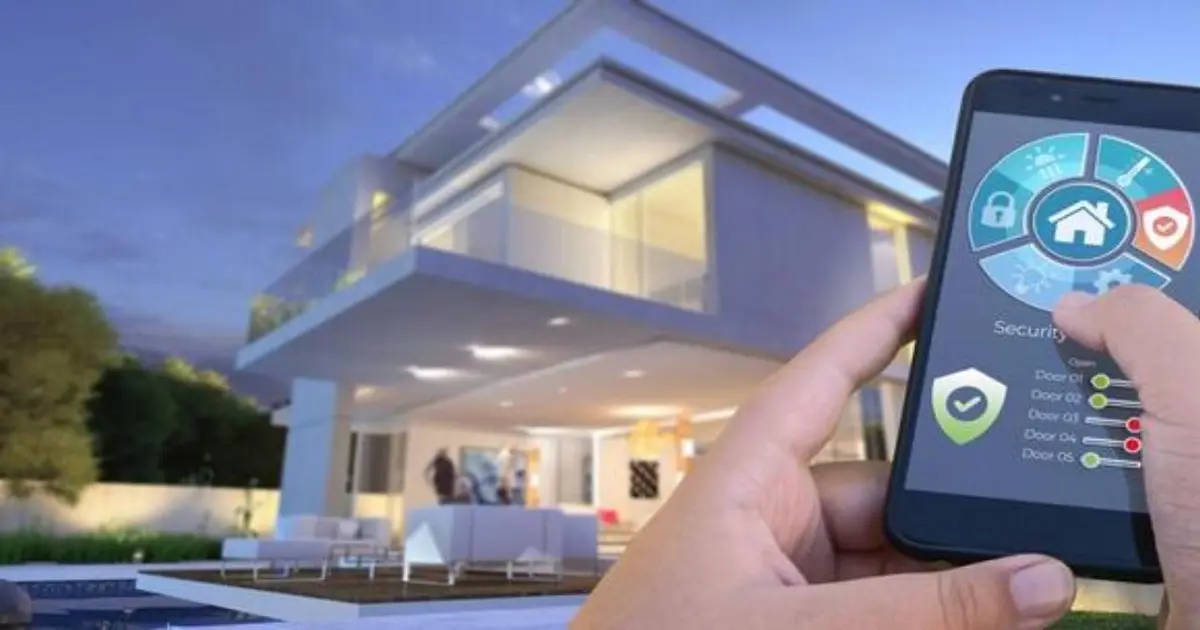Smart home and automation make our lives easier. For example, think of a home that knows what you want and does what you say. This is a smart home and automation, where technology makes our lives easier, happier, and better. Also, technology connects everything in our home and makes it smart. This changes how we live and enjoy our home.
The Components of a Smart Home
Smart Lighting Systems
Gone are the days of manually switching lights on and off. Smart lighting systems enable homeowners to control the ambiance and brightness of their spaces through their smartphones or voice commands. These systems offer customization options, scheduling features, and even the ability to change lighting colors to match different moods.
Home Security and Surveillance
Smart home and automation make our lives safer. For instance, we can lock our doors, watch our homes, and sense any movement with smart devices. Also, we can do this from anywhere with our phone or voice. Moreover, we get messages right away if something is wrong. This makes us feel calm and keeps bad people away.
Smart Thermostats and HVAC Control
Smart home and automation make our lives easier. For example, smart thermostats help us use less energy and save money. They learn when we are home or away and change the temperature for us. This makes our home use less power, which is good for us and lowers our bills. Furthermore, we can also tell our thermostats what to do with our phone or voice when we are not home. This makes our home cozy and ready for us when we come back.
Automated Home Appliances
Smart homes make our lives easier. For instance, you can make your coffee in bed or heat the oven on your way home. Moreover, you can use your phone or your voice to tell your fridge, oven, washer, and even your robot vacuum what to do. This makes your homework faster and easier.
The Advantages of Embracing Home Automation
Enhanced Convenience and Comfort
Smart homes make our lives easier. For example, we can use one thing to control many things. Also, we can make things happen by themselves. Technology helps us do less work and have more fun.
Improved Energy Efficiency
Smart homes promote energy conservation through intelligent monitoring and management. By analyzing usage patterns, devices can optimize energy consumption, leading to lower bills and a reduced environmental impact.
Heightened Security and Peace of Mind
Home security is no longer limited to physical locks and alarms. Smart home systems provide real-time alerts, live camera feeds, and the ability to remotely lock and unlock doors. This comprehensive approach to security enhances our sense of safety.
Remote Monitoring and Control
Traveling or away from home? Smart home and automation allow you to monitor and control devices remotely. Forgot to turn off the lights or lock the door? With a few taps on your smartphone, you can take care of these tasks no matter where you are.
Challenges in Smart Home Adoption
Compatibility and Interoperability Issues
The diverse range of smart devices available on the market may not always communicate seamlessly with each other. This can lead to compatibility issues, requiring homeowners to choose devices that work well within a unified ecosystem.
Privacy and Data Security Concerns
With increased connectivity comes the risk of potential data breaches or unauthorized access. Safeguarding personal information and ensuring that smart devices are protected from cyber threats is a crucial consideration.
Initial Setup and Learning Curve
For some users, setting up and configuring smart devices can be challenging. The initial learning curve might discourage potential users from fully embracing home automation.
The Future of Smart Homes: Innovations on the Horizon
Artificial Intelligence and Machine Learning Integration
The future of smart homes lies in AI and machine learning. Homes will learn from our behaviors and preferences, adapting to our needs without explicit commands. This can range from adjusting lighting based on natural light availability to predicting optimal temperature settings.
Voice Control and Natural Language Processing
Voice assistants like Amazon’s Alexa and Google Assistant are just the beginning. The integration of natural language processing will enable more fluid and human-like interactions with our smart home and automation systems.
Expansion of IoT Ecosystems
The Internet of Things (IoT) will continue to expand, connecting an even broader range of devices and systems. This interconnectedness will allow for more comprehensive automation and data exchange, creating a more integrated living experience.
Embracing a Smarter Future: Steps to Get Started
Assess Your Needs and Prioritize
Start by identifying which aspects of your home could benefit from automation. Whether it’s security, energy efficiency, or convenience, understanding your needs will guide your smart home and automation journey. In addition, you should consider your budget, compatibility, and installation options. Furthermore, you should research the different types of smart devices available, such as lights, thermostats, cameras, locks, and speakers. Finally, you should compare the features, benefits, and drawbacks of each device and choose the ones that suit your needs best.
Choose Compatible Devices and Systems
Smart homes make our lives easier. For example, you can control your lights, thermostat, and security system with your voice or your phone. However, to enjoy a smooth and hassle-free experience, you need to choose devices and systems that work well together. This means that they are compatible with each other. Compatibility means that different devices and systems can communicate and cooperate. This reduces the chance of having problems or conflicts later on.
Ensure Network Security and Privacy Measures
Protecting your data should be a top priority. Change default passwords, use secure networks, and keep your devices updated with the latest firmware to guard against potential security breaches.
Start Small and Scale Gradually
You don’t need to transform your entire home overnight. Start with a few key devices, master their usage, and gradually expand your smart home ecosystem as you become more comfortable with the technology.
If you want to know about Adjectives for Technology let’s look into this article.
Conclusion:
Our homes are getting smarter every day. They can do many things for us, like save energy, keep us safe, and make us happy. Technology makes our homes better and easier to live in. Furthermore, we can control our homes with our voice or our phone. Additionally, we can make our homes fit our needs and wants. Smart homes and automation are the way to a better future.
Frequently Asked Questions:
Are smart home devices compatible with different operating systems?
Yes, many smart home devices are designed to be compatible with various operating systems, including iOS and Android.
Can I control my smart home when I’m not at home?
Absolutely! Most smart home systems offer remote control capabilities through dedicated apps on your smartphone or tablet.
How do smart homes contribute to energy savings?
Smart homes optimize energy consumption by analyzing usage patterns and adjusting devices accordingly, leading to reduced energy waste.
Is privacy a concern with smart home technology?
Privacy is a valid concern, and it’s important to choose reputable brands that prioritize data security. Additionally, setting up strong passwords and using secure networks adds an extra layer of protection.
Can I install and set up smart devices on my own?
Yes, many smart devices come with user-friendly installation guides. However, if you’re unsure, seeking professional installation might be a good option to ensure everything is set up correctly.



